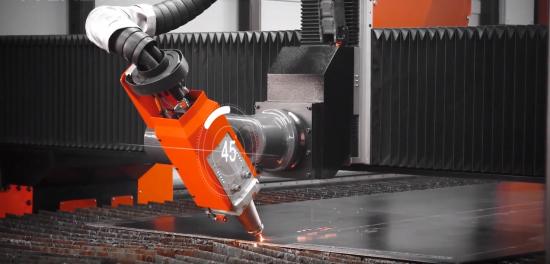Nukon fibre laser cutting machine Blog by Steve Haddrell.
Ever wondered what going on inside the head of your Fibre Laser Cutting Machine? Here’s a brief description of the components and their functions.
Right at the top (or side) of the head is the Laser Delivery Fibre.
This brings the beam from the laser resonator to head, via a length of glass fibre.
At this point the beam is tiny. It’s been compressed inside the resonator ready to be sent to the head through the fibre.
The Collimation Lens expands the compressed beam from the Laser Delivery Fibre, up to a usable size.
When the beam leaves this optic its ready for delivery to the focusing lens. This optic is not user serviceable.
The Focus or Cutting Lens takes the expanded beam and focuses it to a very small spot.
This is generally focused on or into the work piece.
The energy density of this spot is what allows the processing of materials with the laser. This optic is not user serviceable.

Most modern heads have a lens positioning system within them.
These are generally servo controlled and are very accurate.
These systems allow the focal position of the cutting lens to be placed very accurately on to the work piece, via the control system, and tech tables of the machine.
This system is very fast in operation and makes switching cutting styles simple, and seamless for the operator.
It’s very important to keep the optics mounted in the head completely clean and free of contamination.
To this end, most modern heads contain Protective Window or Cover Slide to keep the cutting process isolated from the main optical components of the head.
The Protective Window is relatively inexpensive when compared to the cutting or collimating lens and is consumable. The Protective Window is operator serviceable.
The cutting process requires an assist gas.
This gas is introduced through the Assist Gas Inlet into the Assist Gas Cavity, directly below the Protective Window.
The gases in this cavity can be at extremely high pressure and are there to assist cutting.
The main function of the nozzle is to deliver a jet of gas to the cutting process in a controlled and stable manner.
This relatively low-cost component is key to good processing. It must be kept in good condition and should be inspected frequently.
The NLCH additionally has:
Collimation Lens cover slide for extra protection of the top optic
Humidity sensing
Stray light sensing
Temperature sensing
Gas leak sensing
Field serviceable optics
And with the nLight resonators the option for CutLine adaptive beam technology
Got a question about fibre laser cutting or tube lasers? Contact Steve now – sales@nukonlasers.co.uk
The Nukon NLCH head in service on our Nukon Fibre Laser machines currently, is more advanced than the design shown below.
Watch a video here.